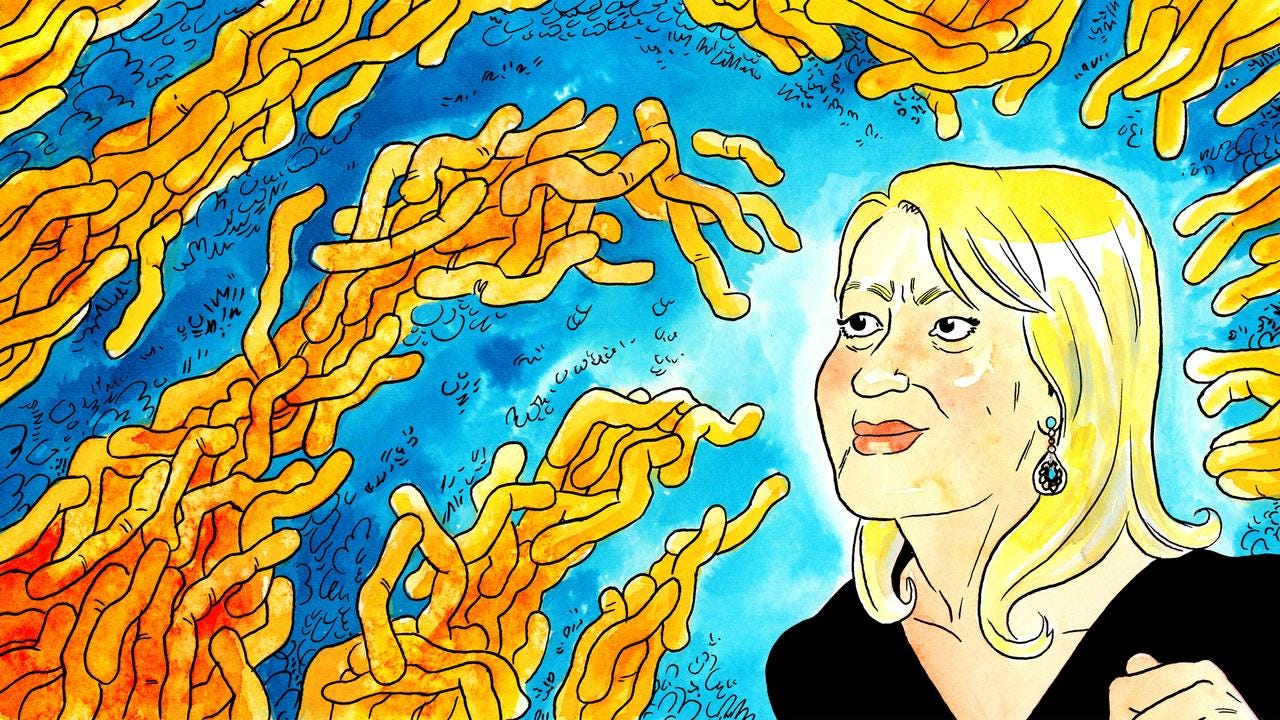The Magic Poop Potion
An Indiana grandma killed off a devastating superbug with a homemade fecal transplant and then embarked on a crusade to win over the FDA.
Catherine Duff, a fifty-seven-year old Indiana grandma with a compromised immune system, drove up to the security gates of the National Institute of Health in Bethesda, Maryland. She was greeted by four armed guards, two of them holding dogs on leashes. She was asked to get out of the car and proceed into a booth where she went through what she describes as “the strictest security check I’ve ever been to in my life.” She was patted down and asked to hand her belongings to the personnel. “They don’t just look at your purse; they take everything out,” she recalls. When she was finally let out of the booth, she found the doors of her Chevrolet Tahoe open and a canine sniffing through the glove compartment. Guards guided mirrors underneath the car, checking for explosives. For the shy, timid person Catherine Duff was, the process seemed very intense. “The only thing they didn’t ask for was a DNA sample,” she says. “It was a bit intimidating!”
Half an hour later, armed with a badge that allowed her to enter the NIH campus, she headed to the Lister Hill Center auditorium. As she browsed the registration sheet, she found her first surprise. Out of 150 participants in this public workshop, she was the only member of the public. Everyone was a doctor, a researcher or an affiliate of the CDC, FDA or other institutions, while her badge boasted neither Ph.D. nor MD. Catherine felt out of place — and intimidated again. Most attendees sported formal attire — women wore business suits, men sported suits and ties. She wore a skirt and a black cardigan. Some participants greeted each other like old friends; she didn’t know anyone. The auditorium’s first few rows, outfitted with microphones and outlets for laptops, were reserved for featured speakers, so she settled in the bleachers and took out her iPad to take notes on fecal updates.
The Food and Drug Administration was hosting a public workshop with a peculiar name: Fecal Microbiota for Transplantation. Over those two days in May 2013, doctors and policymakers from the FDA and Centers for Disease Control would discuss the risks and benefits of transplanting human feces to treat Clostridium difficile, commonly known as C. diff, an intestinal infection that claims 14,000 lives a year in America alone. Catherine knew the horrors of the illness firsthand. She had been confined to her house for weeks, having to use the bathroom every two hours, and was bedridden for months, fatigued from not being able to absorb nutrients from food. “You can get renal failure or cardiac arrest because you get so dehydrated from diarrhea,” she says. “And at one point I was in renal failure.” After a friend found her unconscious in her house, she was rushed to the emergency room and spent three days in the hospital. These severe dehydration incidents left a permanent mark — Catherine’s kidney function had decreased.
During its sixth reoccurrence the infection became antibiotic-resistant, rendering the standard Western medicine useless. Catherine read on the Internet that some C. diff sufferers cured themselves with fecal transplants — in layman’s terms, putting healthy people’s excrement up their butts.


